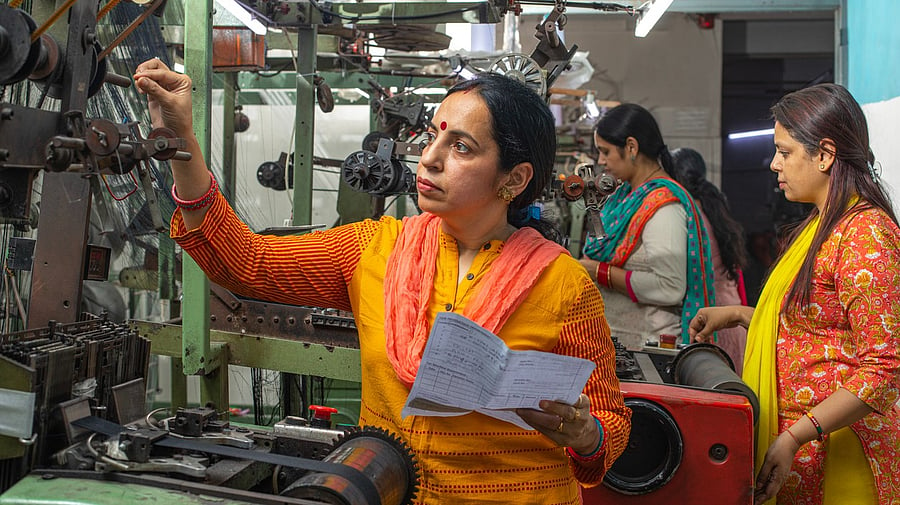
Indian women working blue-collar jobs.
Credit: iStock Photo
The National Statistical Office (NSO) released its second all-India Time Use Survey (TUS) unit data on April 2. TUS records all the activities, and the time spent on them by respondents for a given reference period, usually 24 hours. A pilot survey for six states was conducted in 1998-99 and the first country-wide TUS was carried out in 2019.
In developing countries like India, TUS has been used to record the range of economic (including informal and subsistence) and other activities that women carry out. Periodic Labour Force Surveys (PLFS) often have issues in definitions of work, and survey errors (respondent and investigator bias)
that may not account for all their activities.
These disparities call for a closer look into how TUS and PLFS estimate women’s economic activity with similar construct and reference periods. As per the PLFS, the definition of economic activity includes the production of goods and services for pay/profit, own use production of primary goods, and fixed assets as economic activity. TUS 2024 divides activities based on the International Classification of Activities for Time Use Statistics (ICATUS) 2016. In this data source, participation in employment and related activities, agriculture, fishing, forestry and mining for own use, and construction activities for own final use are considered as economic activity. Persons who engage in any of these for at least an hour a day are considered participants. In the PLFS, the reference period is consistent with the current weekly status participation.
TUS gives a higher estimate of women who take part in economic activities than the labour force surveys because of a comprehensive recording of all activities performed and minimal survey errors. For example, the estimated workforce participation rates for rural women of all ages from the labour force survey were 25% and 58% from the pilot TUS conducted in 1998-99. Using the construct of economic activity and reference period explained above, in 2019, the estimates of rural women (above 15 years of age) in economic activity from TUS were 32%, around 12 percentage points higher than the estimate of PLFS 2019 (author’s calculation). Whereas in 2024, TUS measured that 35.6% of rural women engaged in economic activity and according to the PLFS, it is 37.1%.
TUS often gives a higher estimate than labour force surveys – so what explains the shift in 2024? A large part of the explanation lies with the PLFS numbers over the years. In 2019, the participation of rural women (above 15 years of age) in economic activities was around 20% and a whopping increase to 37% was noted in 2024. The trend is lauded as a sign of improving, more inclusive economic activity.
Rise in self-employment
First, a deeper look into the numbers says that most of the rise in participation is occurring on account of rural distress. The distribution of different categories of employed into self, wage/salaried, and casual types show that a huge increase is coming from the self-employed worker; it was 23% in 2019 and this increased to around 35% in 2024. For the wage/salaried type, a decline of four percentage points – from 12% in 2019 to around 8% in 2024 – marks a declining demand for jobs and a weaker sign of economic activity.
Second, some part of the rise could have come from detailed instructions shared with the field staff to identify the economic activities. For example, it is mentioned explicitly that if the wife prepares items (papad, pickle) at home and the husband sells them, both will be considered engaged in economic activity.
There has been no change in methods used in TUS over the two rounds. The TUS estimates say there is a slight increase in women’s participation in economic activities. For rural women, from 32% to 35% and urban women from 19% to 21% – between 2019 and 2024. So, TUS is not pointing to any dramatic increase in women’s participation in economic activities over the years.
It is important to have periodic data on time use and we have begun to compile it. There are some survey issues even in TUS, such as collecting information from proxy respondents and asking respondents to identify “major” and “minor” activities that could have biased responses. These gaps could be fixed, and we could also collect time-use data from a PLFS sub-sample to make its conduct more efficient over time.
(The writer is an assistant professor in Social Sciences, National Law School of India University, Bengaluru)